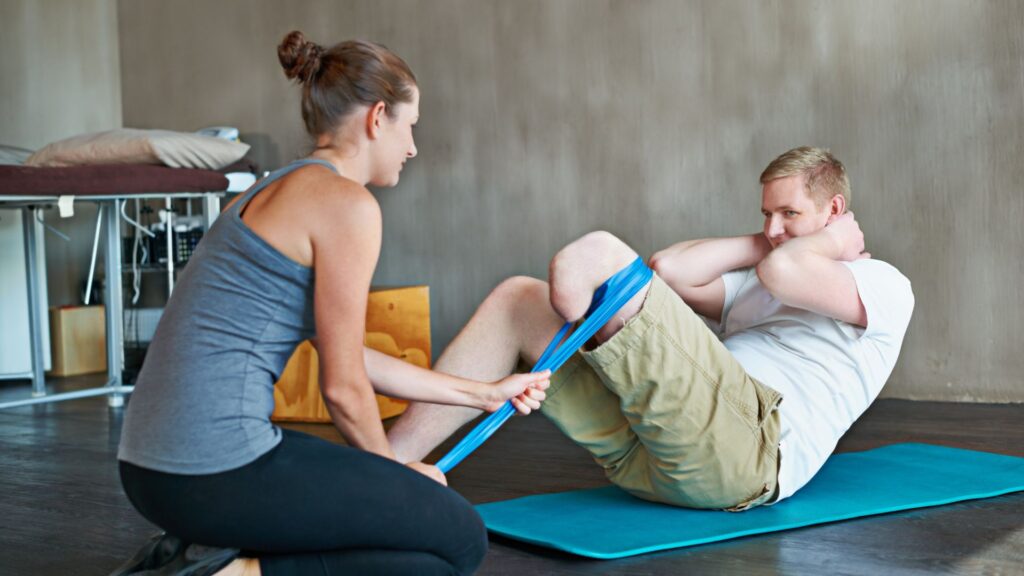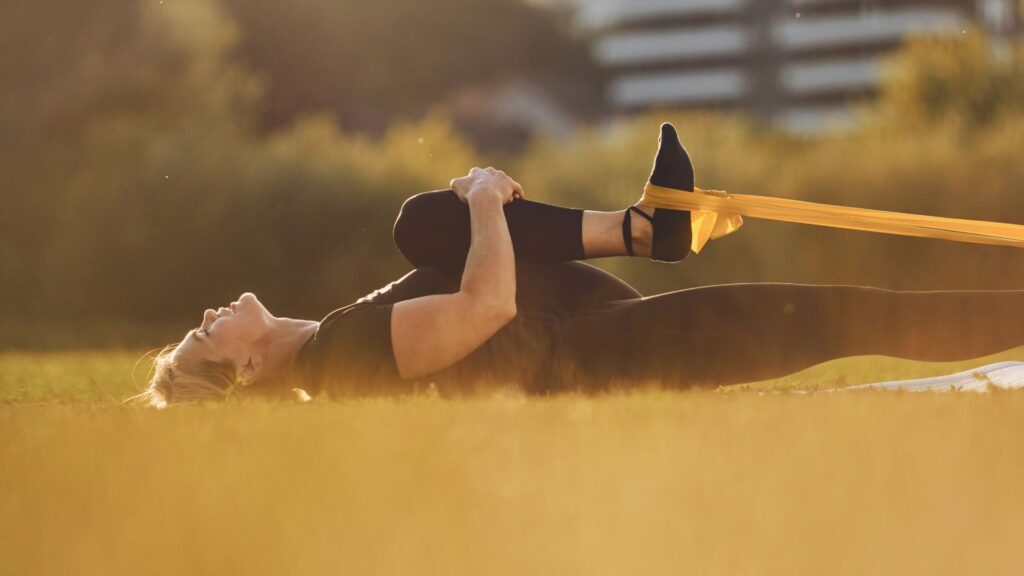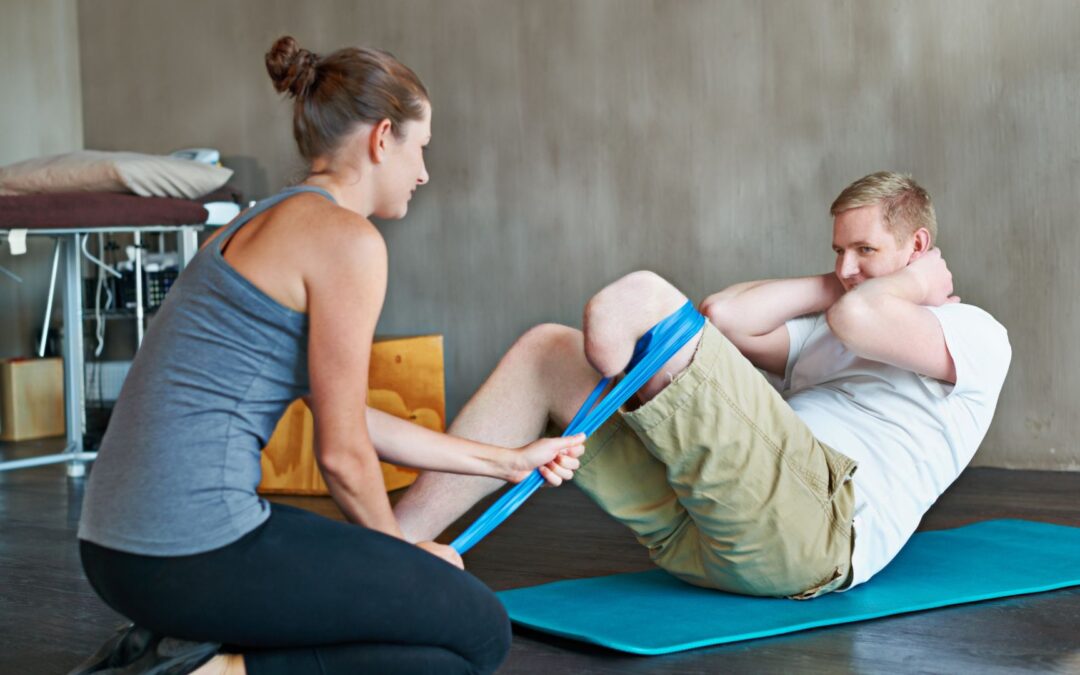
Before starting any exercise, especially for hip or lower back concerns, review My First Visit guidelines. The hips play a critical role in supporting the spine, pelvis, and overall posture. Limited hip mobility can lead to back pain, knee strain, and poor functional movement. Fortunately, three simple daily steps can help restore flexibility, strength, and comfort.
Why Hip Mobility Matters
The hip joint is a ball-and-socket joint surrounded by muscles, ligaments, and tendons. Key structures include:
- Gluteus maximus, medius, and minimus – stabilize the pelvis and control leg movement
- Hip flexors (iliopsoas, rectus femoris) – lift and bend the thigh
- Adductors – control inward leg movement
- Hamstrings – connect the pelvis to the lower leg
Stiff hips can result from prolonged sitting, muscle imbalances, or previous injuries. Improving mobility reduces stress on the lower back and knees, enhances posture, and prevents injuries during daily activities.
Step 1: Hip Flexor Stretch
How to do it:
- Start in a kneeling lunge position (right foot forward, left knee on the ground)
- Gently push hips forward while keeping the torso upright
- Hold 20–30 seconds, repeat both sides
Benefits: Opens tight hip flexors caused by prolonged sitting, improves pelvic alignment, and reduces lumbar strain.
Step 2: Glute Activation
How to do it:
- Lie on your back, knees bent, feet flat
- Press through heels to lift hips slightly off the floor (bridge pose)
- Squeeze glutes at the top, hold 2–3 seconds, lower slowly
- Repeat 10–15 times
Benefits: Strengthens glute muscles to stabilize the pelvis and reduce compensatory stress on the spine.
Step 3: Hip Rotations
How to do it:
- Sit on a chair or mat, knees bent 90°
- Rotate one leg outward (external rotation) and inward (internal rotation) slowly
- 10 reps each direction per leg
Benefits: Improves joint mobility, loosens tight hip rotators, and enhances functional movement for daily activities.
Tips for Safe Home Practice
- Warm-up first: Light walking or marching in place for 2–3 minutes
- Move slowly: Avoid bouncing; gentle holds are more effective
- Breathe naturally: Inhale during relaxation, exhale during movement
- Consistency is key: Daily practice provides better results than occasional stretching
- Listen to your body: Stop if you experience sharp pain or numbness

Integrating Hip Mobility With Chiropractic Care
Chiropractic care complements hip mobility exercises by:
- Identifying joint restrictions in the hips, pelvis, and lumbar spine
- Reducing muscle tension with soft tissue techniques
- Improving overall alignment to enhance exercise benefits
By combining daily mobility exercises with chiropractic adjustments, you support long-term hip health, reduce lower back pain, and improve daily functional movement.
Final Thoughts
Improving hip mobility doesn’t have to be complicated or time-consuming. By dedicating a few minutes daily to these three simple steps, you can reduce stiffness, enhance posture, and support your spine’s health.
Take the next step toward a more mobile, pain-free life — schedule your chiropractic consultation through Contact or Visit.
